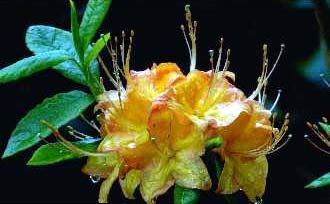Pergolas and arbors provide a cool, airy retreat, a place to enjoy a lovely view, or a gracious entryway for a building or a garden. Vines such as wisteria, grapes, and climbing roses add delightful color and fragrance to this traditional form of garden architecture.
Pergolas and arbors have been used for at least 3,000 years in garden architecture. They were first used in Egypt and later adopted by the Greeks and Romans. Over time they became more ornate, with the French and English building more private enclaves. By the time they were introduced to the New World, they were a standard of gentility and, as such, were widely used in colonial gardens.
Built in the shape of a tunnel, these three-dimensional trellises serve as outdoor passageways or rooms. Fragrant vines are trained up the vertical supports and onto a roof-like framework to provide fruit and flower, shade and elegance.
A Pergola or an Arbor?
Traditionally, the pergola is a rustic structure of rough, wood cross-beams on vertical, columnar supports. There is no latticework between these supports, and the open roof is flat. An arbor, by contrast, often has an arched roof, and there is a more complex framework on the sides for training vines. In short, the pergola is a simple and functional outdoor hallway, while the arbor is more decorative, private, and room-like.
Considerations and Possibilities
Pergolas and arbors are functional structures which look out of place when left standing alone with little relation to their surroundings. The materials for construction should be chosen to fit in with the general architecture of nearby buildings. The shape may vary from T-shaped to S-curved. Entrances can be located at the ends or in the middle, and the roof of an arbor can be flat or elegantly arched.
Of utmost importance is the overall strength of the structure. It will be difficult to repair a pergola once plants have grown over it. Occasional maintenance will be necessary, however; wood will need to be refinished, and all vines will require pruning from time to time.
Take into account the species of vine that will be planted. Delicate ones require less support and a lighter framework to grow upon. Other vines, such as wisteria, grow to be very heavy, requiring the sturdiest materials available and roof beams that are close enough together to support the weight. Your choice of vine will also determine whether there is dense or mottled shade within the arbor or pergola.
Materials
Ready-made arbors can be purchased in home and garden stores, but these usually lack strength and stability. In most cases, it is best to build one out of strong wood. This can be rough timber or cut boards, but it should always be protected with a stain or paint. For added stability and protection from ground moisture and damaging insects, wooden vertical supports should be seated on metal "feet" held in concrete.
Galvanized metal structures may be preferable in some situations. A wire mesh over the crossbeams is sometimes used on the roof.
TIPS
Some species, such as grapes, take a few years to reach the desirable size for an arbor. Meanwhile, try planting summer annuals such as tomatoes for shade, color, and interest.
The proportions of a pergola should be given due consideration. As a rule of thumb, it should be a bit wider than it is tall. Unless it is to be a small arbor at a gate or doorway, the length should always be greater than the height or width.


